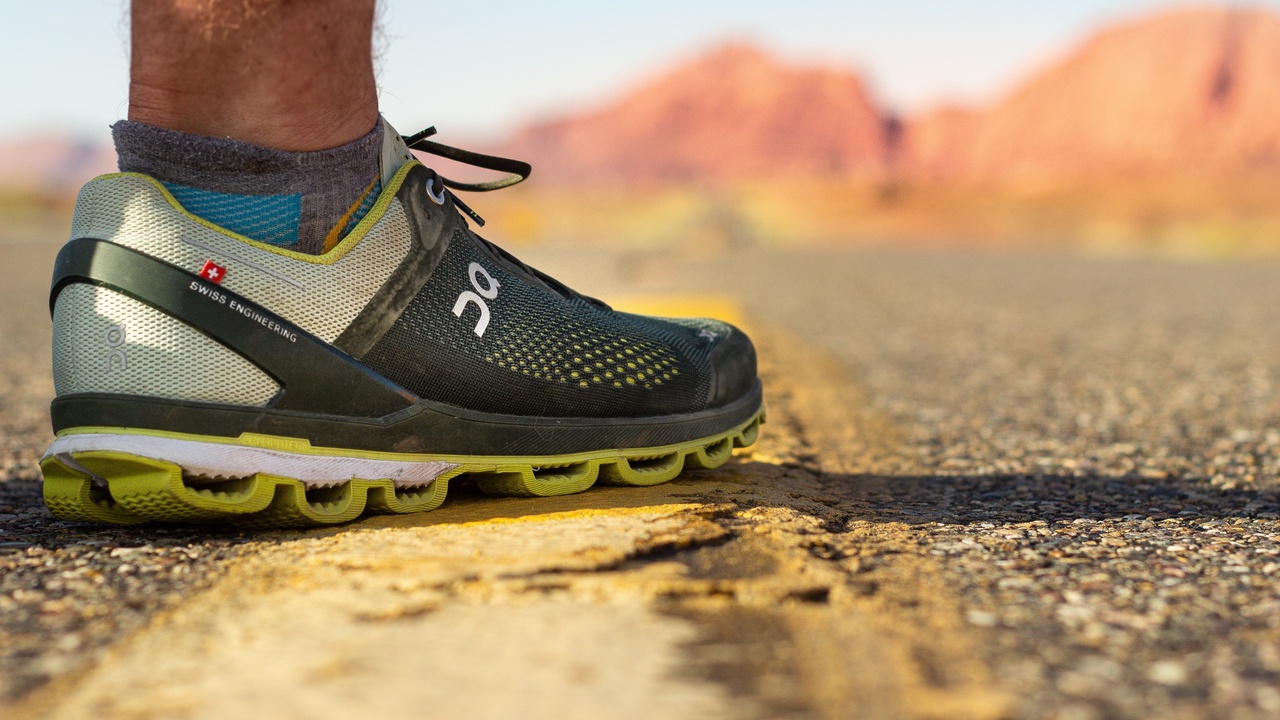
If the Shoe Fits
Oct 04, 2021In 2019, runners wearing Nike Vaporfly shoes took 31 of 36 podium positions at major marathons. That same year, Kenyan Eliud Kipchoge made history by running a sub-two-hour marathon in Nike Alphaflys.
The Vaporflys and Alphaflys are just two of the high-tech shoe models revolutionizing the modern running world. Featuring thick soles and rigid materials like carbon fiber to enhance spring, the designs are helping elite athletes topple times with their ability to deliver greater energy return and speed. But they’re also unleashing a firestorm of controversy over what qualifies as an unfair advantage—and highlighting the importance of what’s in a shoe.
In January 2020, the World Athletics, track and field’s world governing body, banned shoes in competition that have soles thicker than 40 millimeters or with more than one plate or blade embedded. That may not mean much for us mere mortals of running, but it does shine a light on the fact that the shoes we wear can have a major impact on how efficiently we run.
Running shoe mechanics
Choosing the best shoe for you is largely determined by your unique gait and level of pronation.
Gait is the way you move your foot while running or walking. Pronation is the way your foot rolls inward to absorb the impact when you run. For many people—around 60 percent of runners—the foot either rolls inward too much or not enough.
Runners generally fall into one of three categories when it comes to pronation: supinator, meaning they have too little arch collapse; normal, a reference to an arch collapse that is just right; or overpronator, which occurs when someone has too much arch collapse.
Based on this, you can walk into any local running store and an associate should be able to help you evaluate your gait and level of pronation and direct you toward a model that will serve as a good match:
- Normal pronators and supinators: neutral shoes
Neutral running shoes are designed to be “neutral” across the shoe, which means they offer little to no structural support to control movement and feet can move naturally while you run.
- Mild and moderate overpronators: stability shoes
Stability running shoes feature structures to keep the foot and ankle stable and correctly positioned when you run.
- Excessive overpronators: motion-controlled shoes
Motion-controlled running shoes are designed to limit excessive foot motions, and include support to help improve foot stability and reduce the amount of pronation.
Today, sports medicine experts also advise choosing a shoe based on a runner’s specific injury history.
For example, if you’ve had knee injuries in the past, shoes with less of an angle between the heel and the forefoot—called a lower drop—might make sense because they shift some of the impact from the knees to the calves, Achilles tendons and other areas of the lower legs. If you’ve had calf and Achilles issues in the past, though, shoes with a greater heel-to-toe drop might be best because they transfer impact from the calves and Achilles to the knees.
Although the mechanics of the shoe—things like cushioning, flexibility, sole thickness and weight—all play a major role in choosing your best fit, you also can’t forget to factor in what you want out of your shoe.
Are you someone who’s just starting to run? Target a shoe that fits well above all else, and feels comfortable and stable when lightly jogging. Are you planning on primarily running trails? Go for a structured model with plenty of cushioning to protect you from the impact of technical terrain. Looking for shoes that give you some speed? In that case, you want a shoe with a lot of spring and high energy return.
Running shoes and injury risk
One maxim that has largely stood the test of time is that running in different models of shoes can help reduce the risk of injury. One study found that rotating between multiple models lowers the risk by 39 percent, in fact. Researchers believe that’s mostly because the repetitive strain caused by running is spread across several areas of the body, and isn’t concentrated to the same location.
Indeed, putting too much stress on one part of the body over and over again, often called overuse, is the root cause of more than 80 percent of running injuries.
Experts also agree that runners should swap out their shoes every 300 to 500 miles, or when they start to notice signs of wear and tear, because that’s when shoes tend to lose resiliency and shock-absorbing capacity.
Another way to reduce injury risk is by incorporating cross training into your routine. Workouts like strength training, yoga and Pilates all help the body better handle the strain caused by running.
It all adds up to mean that what you put on your feet really does matter, so take the time to do some research and ask questions before choosing the pair that’s going to join you for the miles and months ahead. It’s a pretty big decision.
Now get out there and run your life.
Enter your email address to get weekly episodes delivered to your inbox plus tips on how to become a physically and mentally stronger runner!
Don't worry, we won't blow up your inbox. We just want to send you some great info to help you in your running journey. We hate SPAM, and we will never sell your information, for any reason.

